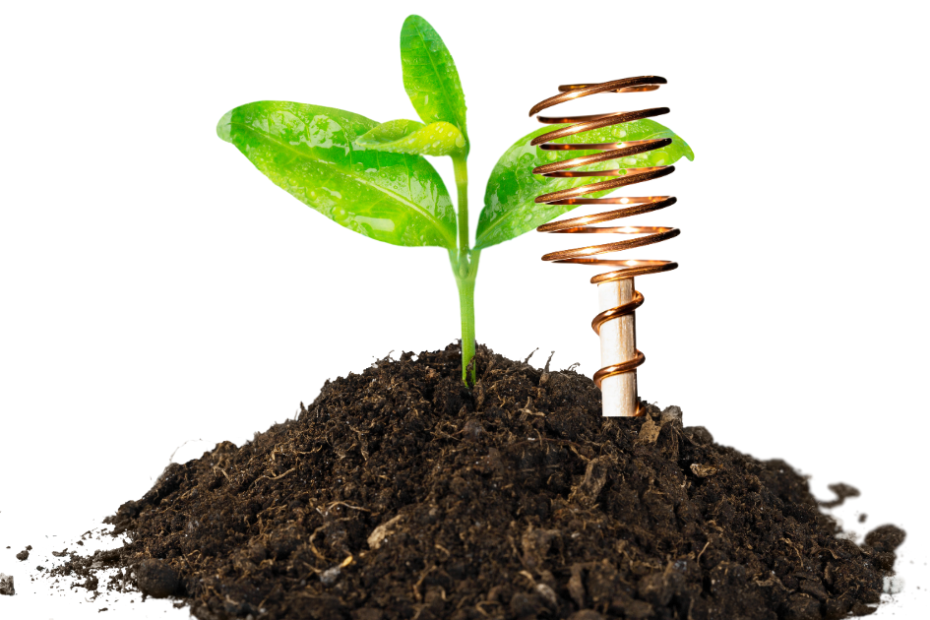Electroculture, a forward-looking agricultural technique, leverages electrical energy to enhance plant growth and productivity. Rooted in principles first explored in the early 20th century, this innovative method has gained renewed interest as the global push for sustainable farming intensifies. By integrating natural processes with subtle electrical currents or electromagnetic fields, electroculture aims to reduce dependency on chemical fertilizers and pesticides while optimizing crop yield and quality.
At its core, electroculture capitalizes on the interaction between atmospheric electricity, soil conductivity, and plant biology. This method can take several forms, including the insertion of conductive materials like copper or zinc rods into the soil, or the use of equipment to generate low-level electromagnetic fields. These techniques promote ion exchange, improve nutrient availability in the soil, and stimulate enzymatic activity within plants, fostering healthier and more resilient growth.
The environmental benefits of electroculture are particularly noteworthy, as it contributes to resource conservation and eco-friendly farming practices. Its adoption could lead to reduced water usage, as crops grown with this approach tend to have enhanced root systems capable of retaining moisture more efficiently. Additionally, there is evidence suggesting that plants cultivated with electroculture exhibit greater resistance to pests and diseases, further decreasing the need for chemical interventions.
Electroculture’s versatility allows it to be applied across various crop types and scales, from small urban gardens to large commercial farms. As climate change and population growth continue to challenge traditional agriculture, electroculture presents a low-impact, high-yield alternative. Researchers and growers alike are increasingly recognizing its potential to transform modern farming into a more sustainable and self-reliant industry.
The Growing Popularity of Electroculture in Agriculture
Electroculture, a method of using electric fields or currents to enhance plant growth and soil fertility, is gaining significant traction in agricultural circles. This growing interest has been fueled by the global need for sustainable solutions to food production challenges, especially in the face of climate change and increasing resource constraints. Farmers, researchers, and agribusinesses are taking note of its potential benefits, which range from increased crop yields to reduced dependence on chemical fertilizers.
Several factors contribute to the rising popularity of electroculture. One primary driver is the growing demand for environmentally friendly farming methods. Electroculture offers a way to optimize plant growth without depleting the soil or introducing harmful substances to ecosystems. Unlike traditional agricultural practices, which often rely heavily on synthetic inputs, electroculture leverages natural energy via electrostatic or electromagnetic fields, aligning closely with the principles of permaculture and regenerative farming.
The momentum behind electroculture is further amplified by advancements in technology. Modern tools and equipment, such as copper antennas, energy conductors, and soil probes, have made it easier to implement electroculture on both small and large scales. These innovations ensure cost-efficiency and scalability, making the technique accessible to a broader range of farmers. Additionally, the introduction of solar-powered devices enhances the sustainability of these systems, aligning with renewable energy trends in agriculture.
Another important factor is the growing body of scientific research supporting the efficacy of electroculture. Studies highlight its ability to stimulate faster germination, improve root development, and enhance nutrient uptake in plants. For example, experiments on crops like tomatoes, lettuce, and wheat have consistently demonstrated better growth outcomes when electroculture techniques are employed. Combined with anecdotal success stories shared by farmers, these findings build confidence in its practical applications.
Interest in electroculture has also spread across diverse agricultural landscapes. In urban settings, vertical farms are experimenting with this technology to boost efficiency, while rural farmers are adopting it to cope with degraded soils and arid environments. Some agricultural startups are even collaborating with universities and research organizations to refine the implementation of electroculture, further driving its mainstream acceptance.
As global food systems seek innovative ways to balance productivity with sustainability, electroculture continues to emerge as a viable and promising approach, fostering curiosity and investment across the agricultural spectrum.
Key Principles Behind Electroculture Technology
Electroculture technology operates on principles that leverage natural energy fields and electromagnetism to enhance plant growth and productivity. This innovative approach relies on subtle environmental manipulations rather than artificial fertilizers or chemicals, making it an eco-friendly alternative for modern agriculture.
At the core of electroculture lies the use of atmospheric electricity. By harnessing naturally occurring electrons in the atmosphere, the technology stimulates chemical and biological reactions within soil and plants. This promotes nutrient absorption, root development, and overall plant vigor. Additionally, electroculture employs conductive materials like copper or zinc to channel these electrical charges efficiently to the plants.
One significant principle is ionization, where low-voltage fields influence ion movement in the soil. This increases the availability of essential nutrients such as nitrogen, potassium, and phosphorus in forms that plants can readily absorb. These enhanced nutrient dynamics create favorable conditions for healthy growth, even in challenging or degraded soils.
Polarity management is another key concept. By optimizing the alignment of magnetic and electrical fields, practitioners improve energy flow to crops. This principle is particularly effective in vegetable and fruit cultivation, as it enhances flowering and fruiting rates.
Furthermore, electroculture emphasizes the critical role of bioelectric signals generated by plants themselves. Integrating these natural signals with external electrical inputs creates synergies that boost photosynthesis and metabolic efficiency.

Overall, these principles illustrate how electroculture merges scientific understanding with sustainability. With its non-invasive and organic methods, electroculture offers a revolutionary approach to meeting modern agricultural demands while preserving the environment.
Potential Benefits of Electroculture for Modern Farming
Electroculture, with its innovative approach of harnessing electrical currents and electromagnetic fields, presents several promising benefits for modern agriculture. This technique aligns with the growing need for sustainable farming solutions while addressing critical challenges faced by the agricultural industry.
Improved Crop Growth and Yield
One of the primary advantages of electroculture is its potential to enhance plant growth and productivity. By stimulating natural plant processes through low-level electrical currents, farmers may observe accelerated germination rates, improved root development, and healthier foliage. Research suggests that crops exposed to electroculture methods may experience significant yield increases, providing a solution to meet rising global food demands.
Enhanced Nutrient Absorption
Electroculture has demonstrated the ability to improve plants’ uptake of essential nutrients from the soil. The electrical stimulation can activate ion exchange processes in the plant roots, facilitating more efficient absorption of minerals like nitrogen, phosphorus, and potassium. This enhanced nutrient flow can lead to stronger, more resilient plants.
Reduced Dependency on Chemical Inputs
Farmers employing electroculture techniques may see a reduced reliance on chemical fertilizers and pesticides. The improved nutrient absorption reduces the need for synthetic inputs, while stimulated plant vitality can strengthen natural defenses against pests and diseases. This shift can lower production costs, minimize environmental pollution, and promote eco-friendly farming practices.
Water Conservation Benefits
Electroculture may contribute to more efficient water usage. By enhancing root systems and nutrient uptake, plants can utilize available water more effectively, potentially reducing irrigation needs. For regions facing water scarcity, this technology could serve as a critical tool for sustainable crop cultivation.
Compatibility with Organic and Regenerative Practices
Electroculture aligns seamlessly with organic and regenerative farming systems. Its non-invasive, energy-efficient methodology supports the restoration of soil health and biodiversity while maintaining compliance with organic certification standards. This compatibility makes it an attractive option for farmers pursuing environmentally conscious approaches.
By addressing key agricultural challenges such as nutrient inefficiency, water scarcity, and environmental impact, electroculture offers a viable pathway to transform modern farming practices into more sustainable and productive systems.
Breaking Down the Science: How Electricity Enhances Plant Growth
Electroculture, an innovative agricultural technique, leverages electrical energy to stimulate plant growth and improve yield. The process is rooted in the principles of bioelectricity, which acknowledges the natural electrical signals plants use to regulate their cellular activities, nutrient absorption, and overall development.
One of the primary ways electricity enhances plant growth is by mimicking or amplifying these inherent bioelectrical signals. When a low-intensity electric field is applied to plants, it can stimulate their ion channels, which play a critical role in nutrient uptake. This facilitates the movement of essential ions like potassium, calcium, and nitrate, directly improving the plant’s ability to thrive in its environment.
Electricity also influences photosynthesis, the key process through which plants convert light energy into chemical energy. Studies have shown that controlled exposure to electric fields can boost chlorophyll production, allowing plants to capture light more efficiently. As a result, they exhibit increased growth rates and healthier foliage.
Another significant role of electroculture is its impact on soil microbiology. Electric currents can enhance microbial activity, encouraging beneficial bacteria and fungi in the soil. This symbiotic relationship between plants and microbes improves root development and aids in disease resistance. Moreover, improved microbial health ensures more accessible nitrogen fixation, an essential process for plant vitality.
Applications of electroculture can be tailored to specific needs. Common methods include electrode-based systems, atmospheric ionization techniques, and the use of electrically charged antennas in fields. Each technique requires careful calibration to ensure optimal results without causing any harm to the plants or surrounding ecosystem.
Additionally, researchers have noted that electricity can mitigate abiotic stresses such as drought or extreme temperatures by stabilizing plant metabolic functions. This makes electroculture particularly promising in regions prone to environmental challenges.
Recent Research and Studies on Electroculture Techniques
Recent investigations into electroculture techniques have demonstrated growing interest and potential benefits in modern agricultural practices. A range of experiments, conducted in both laboratory and field environments, have highlighted the influence of electrical and magnetic fields on plant growth, nutrient absorption, and overall yield improvements. Researchers are particularly focused on identifying sustainable methods that leverage these approaches to reduce chemical fertilizer dependency and mitigate environmental impact.
Studies from agricultural institutes in Europe and Asia have explored how low-voltage currents applied to soil can enhance microbial activity, creating a more fertile environment for plant roots. Such findings suggest that electrical stimulation may indirectly improve crop resilience by enriching soil health. Similarly, controlled trials in countries like Japan have demonstrated that exposing seeds to specific electromagnetic fields prior to planting can lead to faster germination rates and increased crop uniformity.
Several academic institutions in the United States are also analyzing how electroculture impacts photosynthesis. For instance, researchers from the University of California discovered that applying weak electric currents to developing plants could improve the efficiency of light absorption in leaves, leading to accelerated growth. Additionally, field studies conducted in Canada have confirmed that crops like wheat and corn exhibited higher biomass production when subjected to pulsed electromagnetic field treatments.
Parallel to these efforts, interdisciplinary studies are examining potential long-term effects of electroculture. Environmental scientists and agronomists are collaborating to evaluate whether widespread adoption of these techniques could influence ecological systems or unintentionally harm non-target organisms. Preliminary results in this area indicate minimal risk, but further research is being called for to understand broader implications comprehensively.
Researchers are also investigating integration opportunities for electroculture with existing technologies, such as IoT-based sensors and automated irrigation systems, aiming to optimize precision in electrical application. These advancements collectively point toward the possibility of transforming farming practices worldwide, offering avenues for sustainable, tech-driven agricultural innovation.
Innovative Tools and Equipment for Electroculture Enthusiasts
The advancements in electroculture technology have led to the development of tools and equipment designed to enhance efficiency, accessibility, and precision for enthusiasts seeking to harness natural energy for agricultural growth. By integrating cutting-edge designs and materials, these innovations are paving the way for more sustainable and effective farming methods.
Key Electroculture Tools
- Copper Antennas: Copper antennas have become an essential component for empowering plants through atmospheric energy. Their conductivity allows them to capture and distribute static electricity, promoting soil vitality and plant health. Customizable lengths and designs cater to both small-scale gardens and larger agricultural setups.
- Magnetic Soil Activators: These compact devices leverage magnetic fields to stimulate microbial activity in the soil. By realigning the polarity of nutrients, magnetic activators contribute to enhanced root absorption and higher crop yield, making them indispensable for modern practitioners.
- Electroculture Spirals: Electroculture spirals, crafted from environmentally friendly materials such as copper wire, are designed to coil into the soil, channeling electromagnetic currents directly to plant roots. Their effectiveness lies in providing consistent energy flow without the need for external power sources.
Emerging Technologies
- Solar-Powered Charge Generators: Solar-powered charge generators are transforming how electroculture systems capture and store energy from the environment. These portable devices allow users to generate low voltage currents on demand, extending electroculture practices to remote locations.
- Smart Monitoring Sensors: Integrated sensors capable of measuring soil conductivity, plant bioelectric currents, and environmental humidity levels have simplified data collection. Paired with mobile apps, these tools offer real-time analytics for optimizing energy distribution.
Benefits of Modern Equipment
These tools enable hobbyists and professionals to achieve maximum efficiency while minimizing environmental impact. The synergy between traditional techniques and new technologies provides an enhanced, holistic approach to cultivating healthier crops.
Electroculture vs. Traditional Farming: A Detailed Comparison
Electroculture and traditional farming methods differ significantly in their principles, processes, and outcomes, offering distinct advantages and challenges. Examining these differences provides insight into how each technique aligns with modern agricultural needs.
Principles and Techniques
- Electroculture: This approach leverages atmospheric energy, electromagnetic fields, and conductive materials to stimulate plant growth. It avoids chemical fertilizers and pesticides, instead relying on natural energy to enhance soil and crop vitality. Copper antennas, magnetized tools, and conductive wires are typical implements in this method.
- Traditional Farming: This method is grounded in long-established practices, often combining manual labor, machinery, and chemical inputs like fertilizers and pesticides. Traditional farming strategies focus on achieving high yields through intensive land use, crop rotation, irrigation systems, and the use of synthetic additives to improve soil nutrition.
Environmental Impact
- Electroculture: With its emphasis on natural energy, electroculture minimizes the need for chemicals, thereby reducing soil and water contamination. It promotes healthier ecosystems by preserving microbial life and supporting pollinators.
- Traditional Farming: While highly productive, traditional farming can lead to soil degradation, loss of biodiversity, and pollution from chemical runoff. Heavy machinery may also contribute to carbon emissions and soil compaction.
Implementation Costs
- Electroculture: Initial costs are generally low due to the simplicity of materials required. Farmers can set up electroculture systems with minimal investment, though widespread adoption may hinge on further research and awareness.
- Traditional Farming: The cost of deploying machinery, seeds, herbicides, and pesticides can be substantial. Additionally, ongoing expenses for fuel, maintenance, and labor add to the financial burden.
Crop Performance
- Electroculture: Early reports suggest enhanced germination rates, faster growth, and higher yields in certain crops without relying on chemical interventions. However, results can vary depending on regional conditions and crop types.
- Traditional Farming: Known for providing consistent yields over centuries, traditional methods excel in largescale production. However, reliance on synthetic inputs can affect long-term soil health.
By comparing these systems, readers can evaluate the benefits and limitations of merging cutting-edge techniques with conventional wisdom. This fosters informed decision-making in agriculture.
The Role of Electromagnetic Fields in Plant Development
Electromagnetic fields (EMFs) have increasingly shown potential to influence plant development, offering insights into how non-invasive energy sources may optimize growth. Researchers have discovered that plants naturally interact with ambient electromagnetic frequencies during their growth cycles, affecting physiological processes such as photosynthesis, respiration, and cellular signaling. This interaction highlights the significance of EMFs as a factor in enhancing plant vitality.
One of the primary areas of interest is how controlled exposure to specific frequencies impacts germination rates. Studies indicate that low-frequency electromagnetic fields may accelerate seed germination by stimulating water absorption and enzyme activity. Additionally, root elongation has been observed to increase under such conditions, suggesting a direct relationship between electromagnetic stimulation and improved nutrient uptake.
Photosynthetic activity and chlorophyll synthesis are also influenced by EMFs. Research demonstrates that plants exposed to moderate electromagnetic fields experience enhanced energy conversion rates, leading to healthier leaf structures. These observations suggest that EMF exposure could act as a supplemental tool for boosting crop yield in both traditional and modern agricultural setups.

Beyond growth, electromagnetic fields have a role in plant defense mechanisms. Exposure to controlled levels may enhance a plant’s natural resistance to environmental stressors, such as drought or pathogens. This opens avenues for integrating electroculture techniques to create resilient crop varieties better suited for extreme climates and reduced chemical interventions.
The intersection of electromagnetic fields and plant biology has sparked interest in developing advanced agricultural technologies. These developments aim to refine the balance between natural processes and human intervention, ensuring sustainable and efficient food production systems. As more findings emerge, this field offers transformative potential for future farming innovations.
High-Yield Crops and Reduced Fertilizer Usage with Electroculture
Electroculture, a technique utilizing electrical or magnetic fields to enhance plant growth, has garnered significant attention for its role in boosting crop yields while minimizing reliance on chemical fertilizers. Research highlights its potential to improve agricultural efficiency by stimulating natural plant growth mechanisms through environmental energy channels. Farmers and agricultural scientists worldwide are examining this sustainable farming innovation, noting its promising benefits.
One of the primary advantages of electroculture is its ability to accelerate germination rates and improve root development. Studies suggest that plants exposed to specific electromagnetic fields show enhanced nutrient uptake, enabling them to thrive in less fertile soils. By optimizing photosynthesis and metabolic activity, this technique directly influences overall yield increases while simultaneously reducing plant stress caused by environmental factors.
Another noteworthy benefit lies in soil management. Electroculture practices can decrease the need for artificial soil amendments by improving microbial activity within the soil. Enhanced bioavailability of minerals leads to healthier soils, further supporting plant growth without excessive fertilizer input. This aspect aligns well with global sustainability objectives by lowering chemical runoff and pollution stemming from synthetic fertilizers.
Farmers employing electroculture have reported measurable improvements in a variety of crops, including staples like wheat, rice, and corn, as well as high-value produce such as fruits and vegetables. Success stories from regions with depleted soils or unpredictable weather patterns emphasize its potential to address global food security challenges.
Emerging developments in electroculture technology are also refining its accessibility. Solar-powered designs and cost-effective electromagnetic devices are expanding its reach, making it a viable solution for small-scale farmers and large agricultural operations alike. With ongoing advancements, the agricultural sector is steadily moving closer to widespread adoption of electroculture practices, fostering a future where high yields and reduced resource consumption go hand in hand.
The Environmental Impact of Electroculture Methods
Electroculture methods have gained attention not only for their potential agricultural benefits but also for their environmental implications. By utilizing electrical or magnetic forces to optimize plant growth, these techniques offer several opportunities for reducing the ecological footprint of conventional farming practices.
One significant environmental benefit of electroculture is the potential reduction in the use of chemical fertilizers and pesticides. Traditional farming often relies heavily on synthetic compounds that can contaminate soil and water sources. Electroculture encourages healthier plant growth and natural resistance to pests, diminishing the dependency on these harmful substances. Consequently, this method may lower the risk of soil degradation and waterway pollution.
Another advantage lies in resource efficiency. Conventional irrigation systems and energy-intensive agricultural technologies often deplete water and fuel reserves. Electroculture, on the other hand, can improve photosynthesis rates and nutrient uptake in plants, potentially reducing water and nutrient demands. This enhanced efficiency conserves vital resources and supports sustainable food production in water-scarce or resource-limited areas.
Electroculture also contributes to biodiversity preservation. By decreasing the use of chemicals, beneficial soil microorganisms, pollinators, and other wildlife can thrive in agricultural settings. This fosters a balanced ecosystem, which is especially critical as global biodiversity continues to decline due to industrial farming practices.
However, it is essential to consider potential concerns. The production and maintenance of electroculture devices may involve the extraction of rare-earth metals or other materials, which could create environmental challenges. Additionally, questions remain regarding the energy sources used to power electroculture systems and their overall carbon footprint. Addressing these issues could be key to ensuring the long-term sustainability of these methods.
Electroculture represents a promising step toward eco-friendly agriculture, though its scalability and net impact will likely depend on balancing its benefits against its broader environmental costs.
Recent Innovations in Electroculture Technology
Recent advancements in electroculture technology have introduced groundbreaking methods to improve agricultural efficiency and crop health, leveraging the power of electrical energy and magnetic fields. Researchers and agricultural engineers have made significant strides in enhancing the practicality and scalability of electroculture systems.
One notable innovation is the development of precision electroculture devices. These tools utilize precise voltage regulation and controlled electromagnetic fields to stimulate plant growth at specific stages of development. By customizing the electrical treatment based on plant species and growth phases, farmers can optimize crop yields while minimizing energy usage.
A significant breakthrough comes in the form of wireless electroculture systems. Traditional electroculture methods required direct contact through wired setups, which limited application flexibility. Wireless technology now enables the delivery of electrical stimuli to distant fields without disrupting planting arrangements. This helps farmers reduce installation complexity and improve coverage over larger areas.
The introduction of solar-powered electroculture units has addressed energy efficiency concerns. These systems harness solar energy to power electroculture operations, offering a sustainable alternative in regions with limited access to electricity. This innovation supports eco-friendly agriculture practices while lowering operational costs.
Another key advancement is in integrative sensor-based systems. These systems combine electroculture technologies with real-time data from soil, plant, and environmental sensors. By automating adjustments in electrical currents or frequencies, these tools ensure optimal plant conditions regardless of external climate changes.
Finally, researchers have facilitated the development of biodegradable electroculture materials. Instead of relying on synthetic wires and components, biodegradable alternatives reduce environmental impact while maintaining electrical conductivity, making the technology more sustainable over time.
These innovations showcase how electroculture continues to evolve, offering farmers effective tools to enhance agricultural productivity while addressing environmental challenges.
Case Studies Showcasing Successful Electroculture Applications
Electroculture farming has garnered attention worldwide due to its potential to transform traditional agricultural practices. This section examines real-world case studies where electroculture techniques have been successfully implemented, highlighting its impact on crop yields, sustainability, and efficiency.
1. Boosting Crop Yields in Europe
In France, a medium-sized farm utilized copper antennas as part of an electroculture system to enhance vegetable production. Over a growing season, the farm reported up to a 30% increase in yields for crops such as lettuce, carrots, and tomatoes. Farmers observed healthier plants with faster growth rates, attributed to improved ionization and soil conductivity. No chemical fertilizers were used, showcasing electroculture’s potential for organic farming.
2. Sustainable Practices in Sub-Saharan Africa
In Kenya, a community farming cooperative deployed electroculture to combat soil nutrient depletion. Simple equipment, such as magnetic coils and conductive materials, was used to stimulate plant growth. Corn and bean harvests increased by 25%, providing the farmers with food security and better market access. The project underscored electroculture’s role in reducing dependency on costly fertilizers while addressing productivity challenges in resource-scarce environments.
3. Climate-Resilient Farming in the United States
A California vineyard experimented with electroculture to improve grape quality in drought-prone conditions. The system incorporated atmospheric energy collectors, which positively influenced soil moisture retention. The vineyard reported not only enhanced grape flavor profiles but also a measurable decrease in water usage by around 18%. This case illustrates the technique’s ability to align with water-conservation strategies, a critical factor in arid regions.
Electroculture’s adaptability across diverse climates, crop types, and resource settings continues to drive its adoption. These global examples demonstrate its growing relevance in fostering sustainable agriculture while addressing modern challenges.
How Farmers Are Adopting Electroculture Practices Worldwide
Farmers across the globe are increasingly exploring electroculture as a sustainable and innovative approach to enhance crop production and soil health. This technique, which uses electrical currents and magnetic fields to stimulate plant growth, is gaining traction due to its potential to improve yields without relying heavily on chemical fertilizers and pesticides.
In Europe, particularly in France and Italy, small-scale farmers have integrated electroculture tools like copper antennas and magnetic coils into their fields. These devices are designed to harness and amplify natural atmospheric energy, optimizing conditions for photosynthesis and root development. Many European farmers report improved fruit and vegetable quality while simultaneously reducing input costs.
In North America, commercial growers are experimenting with more advanced electroculture systems, incorporating solar-powered setups to create localized electromagnetic fields. These innovations aim to boost seed germination rates and strengthen plant resistance to diseases. Adoption has been propelled by interest in regenerative agriculture principles and increasing consumer demand for eco-friendly farming practices.
African farmers, too, are adopting electroculture as part of efforts to combat poor soil fertility. In regions suffering from nutrient depletion, simple, low-cost solutions like conductive wires placed around crops are being implemented. These adaptations have shown promise in improving crop growth in areas with limited access to modern agricultural technologies.
Asia has seen substantial interest in electroculture among researchers and agritech startups. In countries like India and China, pilot projects are testing hybrid systems that combine electroculture with precision agriculture techniques. These initiatives aim to address food security challenges by boosting productivity in a sustainable manner.
Across these regions, workshops, online forums, and social media platforms are playing a crucial role in spreading knowledge about electroculture. The global spark for innovation reflects a growing recognition of its potential to revolutionize traditional farming while aligning with urgent environmental goals. With increased awareness, more regions are expected to adopt these practices.
Electroculture’s Role in Combating Climate Change
Electroculture, an approach that integrates natural energy systems with agricultural practices, offers unique potential in addressing climate change. By leveraging electromagnetic fields to stimulate plant growth, this technique can directly impact key aspects of sustainable farming, including increased crop yields, enhanced resource efficiency, and reduced reliance on chemical inputs. These advantages are emerging as critical tools in mitigating climate-related challenges.
One of the significant ways electroculture tackles climate change is by decreasing the need for synthetic fertilizers and pesticides. Modern agriculture heavily relies on these chemicals, which contribute to greenhouse gas emissions during production and application. Electroculture minimizes this dependency by boosting plants’ natural growth mechanisms. This not only curbs emissions but also improves soil health and biodiversity, both essential for resilient ecosystems.
Water conservation is another area where electroculture exhibits promise. Traditional irrigation practices often contribute to water wastage and energy consumption. Electroculture techniques, however, can optimize water uptake by plants, ensuring that crops thrive with less water. This efficiency is particularly valuable in regions prone to drought or where freshwater resources are scarce—a growing concern in a rapidly warming world.
Additionally, electroculture’s ability to promote faster and more robust plant growth may help offset the challenges posed by unpredictable weather patterns. By reducing the time required for crops to reach maturity, farmers can achieve consistent harvests even in shorter growing seasons. This adaptability is crucial for regions experiencing disruptions due to changing climatic conditions.
The scalability of electroculture practices also makes them accessible to both large-scale agricultural operations and smallholder farmers. Its low-energy footprint and straightforward implementation align well with global efforts to transition agriculture toward sustainable and carbon-neutral systems.
Challenges and Misconceptions About Electroculture
Electroculture, though promising, faces a number of challenges and misconceptions that hinder its widespread adoption. One significant challenge lies in the lack of standardized methodologies. While some researchers and practitioners report successful results, there is no uniform protocol to replicate these outcomes consistently across different environments, soil types, and crop varieties. This inconsistency creates skepticism within the agricultural community and slows down the transition from experimental to mainstream use.
Another issue arises from the initial setup costs. Although electroculture is often touted as a cost-effective long-term solution, the upfront expenses for equipment, such as coils, antennas, or low-voltage devices, can be prohibitive for smaller farms and resource-poor regions. Additionally, the technology’s dependence on electrical components raises durability concerns, especially in extreme weather conditions or remote areas without reliable access to electricity.
Misconceptions about electroculture also abound, with one of the most common being its association with pseudoscience. Due to its relatively unconventional nature, some critics dismiss it as lacking scientific credibility, pointing to insufficient peer-reviewed studies and a reliance on anecdotal successes. These perceptions undermine efforts to secure funding for large-scale research and development needed to substantiate its effectiveness.
Another prevalent misconception is that electroculture can act as a standalone solution to agricultural problems. While it has shown potential to enhance crop growth and soil fertility, omitting complementary practices such as crop rotation, composting, or pest management can lead to unsustainable farming systems. Educating stakeholders about the realistic applications and limitations of electroculture is essential to prevent mismanagement.
The integration of electroculture into conventional farming also requires clarity around environmental impacts. Concerns about unintended electromagnetic exposure to beneficial microorganisms, pollinators, or nearby ecosystems highlight the need for thorough impact assessments. Addressing these technical, financial, and perceptual hurdles is crucial to ensuring the credibility and viability of electroculture as an agricultural innovation.
Government Policies and Investments in Electroculture R&D
Government intervention has played a significant role in advancing electroculture research and development (R&D) as nations aim to address food security challenges, improve agricultural sustainability, and reduce environmental impacts. In recent years, policymakers worldwide have introduced targeted measures to foster innovation in this evolving field, aligning scientific progress with national and global agricultural goals.
Policy Initiatives Driving Growth
Governments are increasingly implementing policies to incentivize private and public stakeholders to invest in electroculture R&D. Notable initiatives include subsidies for research institutions, grants for startups specializing in agricultural technology, and tax benefits for companies conducting electroculture-oriented studies. These measures aim to bolster collaboration between scientists, farmers, and technology providers. Regulatory reforms have also been introduced to streamline the testing and deployment of electroculture technologies, ensuring that effective methods can reach the market more quickly.
Key Areas of Investment
Investment efforts are focused on several critical areas:
- Infrastructure Development: Funding initiatives are supporting the creation of designated research hubs with state-of-the-art facilities for electroculture experimentation. These hubs foster groundbreaking work in applied electromagnetism, soil health, and crop yield optimization.
- Technology Pilots and Demonstrations: Governments are sponsoring pilot programs to evaluate the feasibility of scaling electroculture technologies across different agricultural ecosystems. These initiatives often include partnerships with rural farming communities.
- Education and Training: Investments are being directed toward educational programs aimed at upskilling agricultural professionals. These programs focus on training farmers in the application of electroculture techniques and fostering a broader understanding of how these methods benefit long-term production.
A Global Perspective
Countries such as France, Japan, and Australia are leading the charge, having committed significant sums toward advancing electroculture science. In the European Union, collective funding instruments under initiatives like Horizon Europe emphasize reducing greenhouse gas emissions while improving crop efficiency through sustainable technology. Similarly, in Asia, countries like India and China are dedicating resources toward integrating electroculture with precision farming techniques to enhance food output in land-scarce regions.
Signs of transnational collaboration are also emerging, with governments fostering alliances to share research findings and pool resources for advanced experimentation. These collaborations highlight the growing consensus that electroculture holds transformative potential for agricultural systems globally.
The Economic Viability of Implementing Electroculture Systems
Electroculture systems are gaining attention not only for their innovative approach to sustainable agriculture but also for their long-term economic potential. Analyzing their financial feasibility requires weighing the initial costs, operational expenses, and the value of the benefits they provide. This evaluation helps stakeholders determine whether electroculture is a pragmatic choice for both small-scale and commercial farming operations.
Initial Investment and Setup Costs
The upfront expense of implementing electroculture varies based on the complexity of the system. For basic setups, materials such as copper wires, antennas, and conductive supports can be sourced at relatively low costs. However, more advanced systems involving solar-powered generators or sensors for precision agriculture require higher initial capital. Costs can also include consultation fees for installation expertise. This variation allows flexibility for farmers with diverse budget constraints.
Operational and Maintenance Costs
Electroculture systems typically incur low operational costs compared to traditional farming methods. Unlike machinery-dependent techniques, these systems utilize natural atmospheric energies, thereby reducing reliance on fuel and electricity. Maintenance requirements are minimal because most materials used in electroculture—such as non-corrosive metals—have long lifespans. This factor substantially lowers ongoing expenses.
Economic Benefits and Return on Investment
Electroculture has been shown to enhance crop yields, improve soil quality, and reduce reliance on fertilizers and pesticides, contributing to significant cost savings over time. Farmers who implement these systems often report increased profits due to higher productivity and reduced input costs. Additionally, markets are beginning to favor sustainably grown produce, which may allow electroculture adopters to charge premium prices.
Balancing Risks and Rewards
While the benefits are promising, certain risks, such as uncertain regulatory frameworks and limited large-scale case studies, may deter initial adoption. Economic viability is therefore influenced by the farmer’s willingness to explore unknown territories with potentially high rewards.
Future Potential: What’s Next for Electroculture Technologies
The potential for electroculture technologies to revolutionize agriculture and food production is vast, driven by advancements in energy systems, automation, and data analytics. Researchers are exploring ways to integrate renewable energy sources, such as solar and wind, to make electroculture setups more sustainable and independent of traditional power grids. This integration could significantly expand its viability in remote or underdeveloped areas where conventional farming technologies are often restricted due to inadequate infrastructure.
Emerging innovations point towards miniaturized electrode designs tailored for varied crop types and soil conditions. These designs aim to enhance the precision of electrical stimulation, allowing farmers to optimize growth at localized levels. Scientists are leveraging nanotechnology to develop materials that improve energy efficiency, reduce maintenance requirements, and extend the life cycle of electroculture systems.
Artificial intelligence and machine learning are also poised to play a transformative role. Predictive models using real-time data could provide insights into the optimal intensity, duration, and frequency of electrical stimulus required for various plants at different growth stages. This application stands to improve crop yields while reducing energy consumption, ensuring a more balanced approach to agricultural sustainability.
One of the most promising areas for exploration is the potential synergy between electroculture and hydroponics. By combining electrical stimulation with soil-free cultivation methods, researchers envision systems that could radically boost productivity in urban farming environments or in regions with water scarcity.
Continued advancements in these areas could unlock new frontiers for farming, improving the global food supply chain while addressing environmental challenges. Electroculture is positioned to become a cornerstone of the next agricultural revolution.
Conclusion: Electroculture as the Future of Sustainable Agriculture
Electroculture is evolving into a promising approach for meeting the demands of sustainable agricultural practices in the face of global challenges. By leveraging natural atmospheric electricity, magnetic fields, and low-energy devices, electroculture offers a transformative shift in how crops are cultivated without reliance on chemical fertilizers or pesticides. This green innovation aligns with growing calls for environmentally friendly agricultural methods, particularly in regions grappling with soil degradation and resource scarcity.
One of the major advantages of electroculture lies in its capacity to improve soil health over time. Techniques such as copper coil antennas or magnetic soil treatments enhance microbial activity and nutrient absorption, fostering plant growth naturally. Additionally, farmers report increased crop yields when employing electroculture strategies, a benefit that holds significant potential for bolstering global food security. Unlike traditional agricultural methods, electroculture also requires minimal resource input, making it accessible to a broader range of growers, from small-scale farmers to large agricultural businesses.
The scalability and adaptability of electroculture further solidify its role in reshaping sustainable agriculture. Innovations like wireless energy delivery systems and solar-powered devices show promise in addressing the challenges of implementing electroculture across diverse terrains and farming conditions. These advancements demonstrate the versatility of this practice, allowing it to complement existing farming techniques or operate as a primary methodology in eco-conscious farming initiatives.
With climate change and population growth putting increasing strain on global food systems, electroculture emerges as an innovative tool capable of addressing multiple challenges simultaneously. It embodies the intersection of technology and nature, offering a versatile solution to elevate agricultural productivity while respecting ecological balance. Farmers, researchers, and policymakers alike are starting to recognize its potential to redefine the future of sustainable farming practices.













